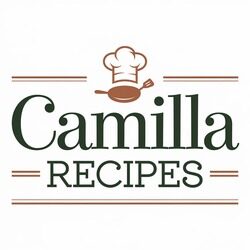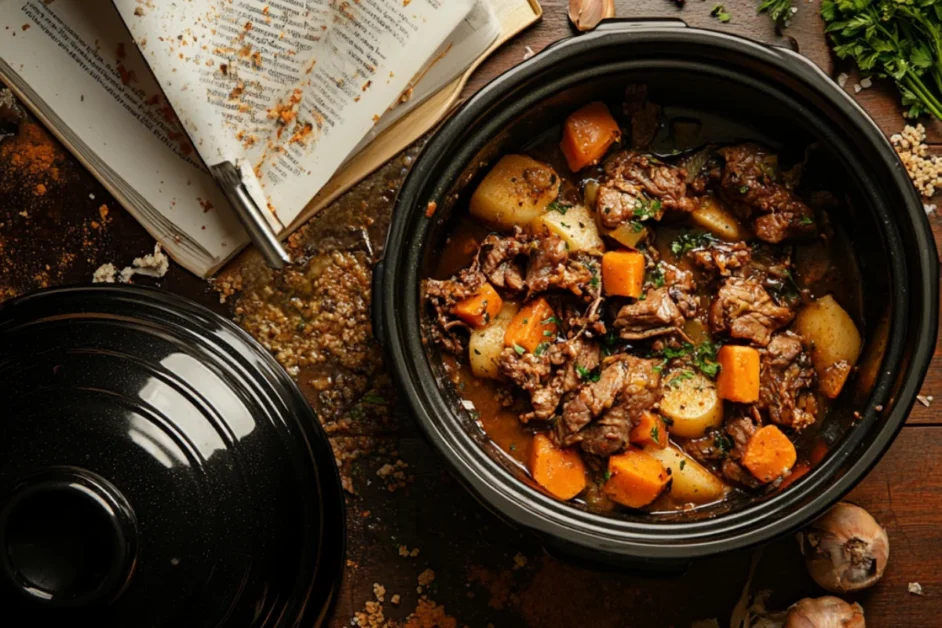Slow cookers, also known as crockpots, are a beloved kitchen tool for creating tender, flavorful meals with minimal effort. They work wonders for soups, stews, and slow-cooked meats, making them a staple in many homes. However, not all foods thrive in a slow cooker. In this guide, we’ll explore what cannot be cooked in a slow cooker and why certain ingredients are better suited for other cooking methods.
Understanding Slow Cookers and Their Limitations
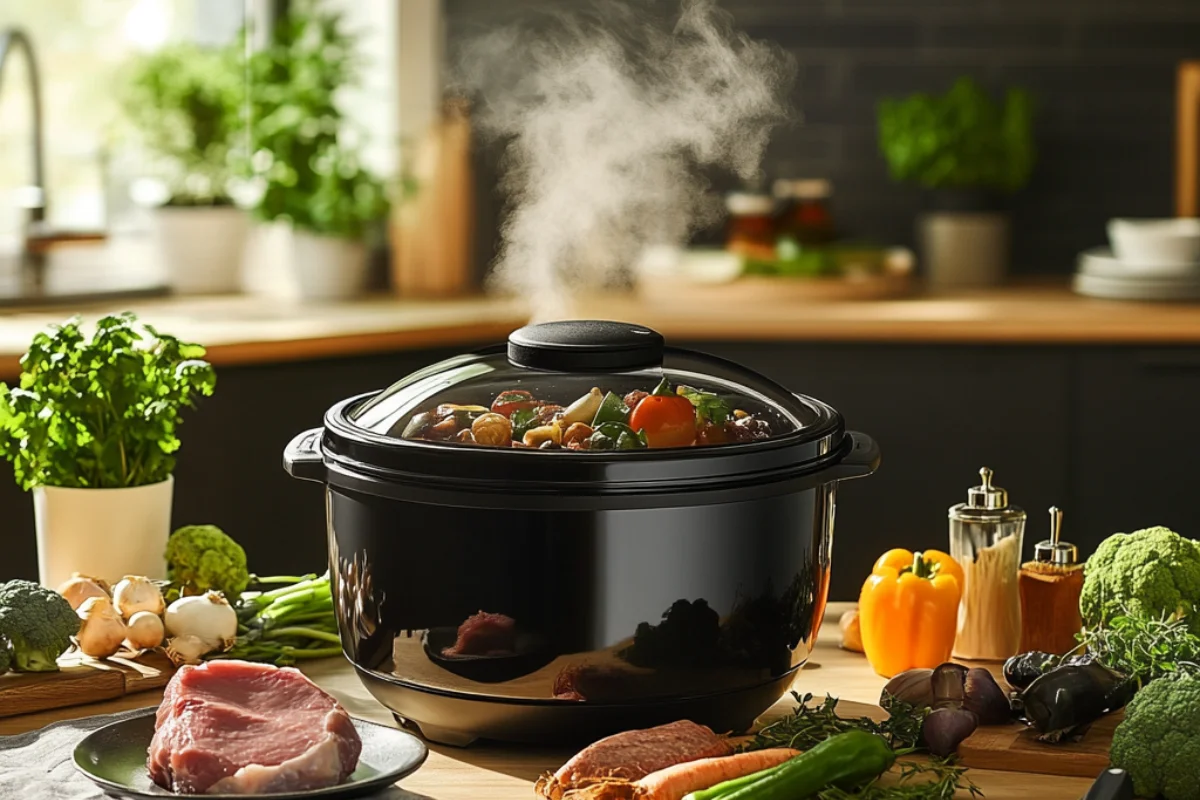
Slow cookers are designed to cook food at low temperatures over an extended period. This technique works exceptionally well for tough cuts of meat, hearty vegetables, and dishes that benefit from slow simmering. However, this same cooking method presents challenges for some foods, leading to unappetizing textures, flavors, or appearances.
While a slow cooker might feel like a one-size-fits-all appliance, it’s essential to understand its limitations. Not every ingredient responds well to prolonged exposure to heat and moisture. Knowing what to avoid will save you from culinary disappointments.
Overview of How Slow Cookers Work
To understand why some foods don’t work in slow cookers, it helps to know how they function:
- Low and Slow Cooking: Slow cookers operate between 170°F and 300°F, depending on the setting. This gradual process is perfect for breaking down collagen in meats but not ideal for ingredients requiring high heat or quick cooking.
- Moisture Retention: The sealed lid traps steam, ensuring dishes remain moist. While this is great for preventing dryness, it can ruin foods that need crisp textures or low humidity.
- Limited Temperature Control: Slow cookers lack the precision of ovens or stovetops. This makes it difficult to adjust quickly for delicate ingredients.
Because of these characteristics, some foods simply don’t perform well under the conditions a slow cooker provides.
Foods That Are Not Ideal for Slow Cooking
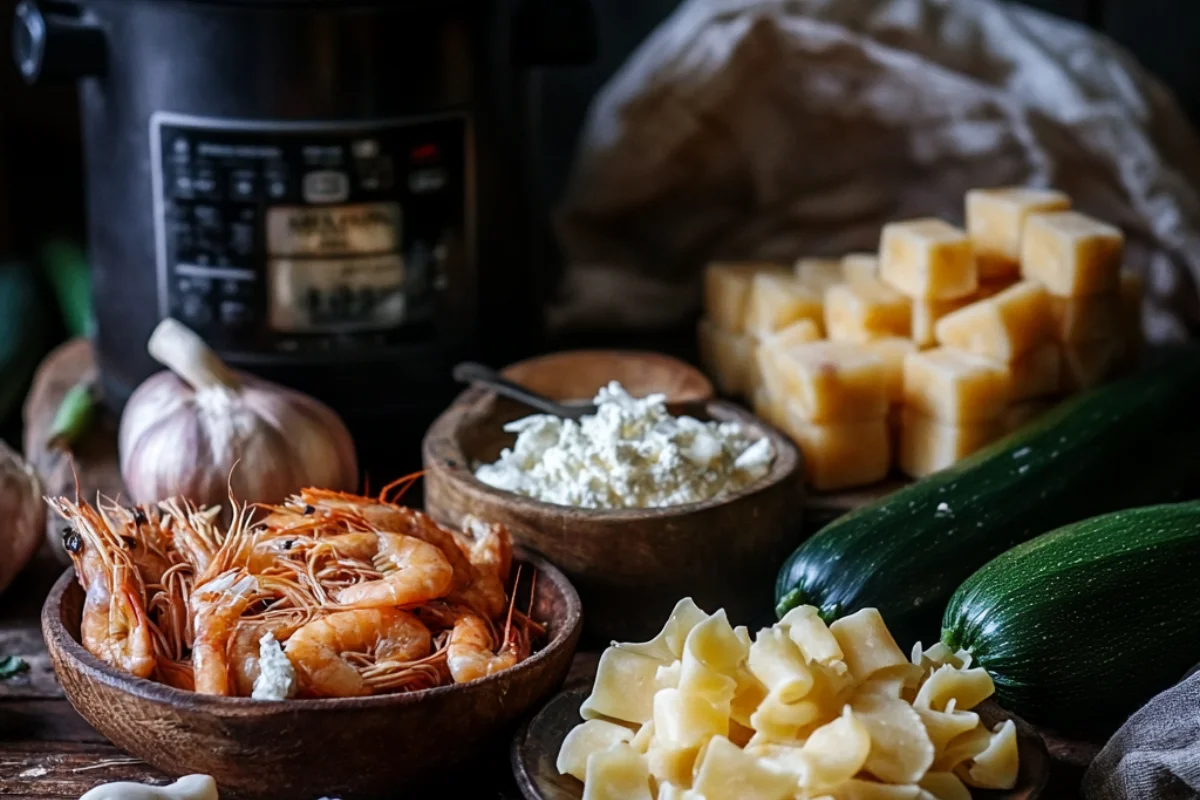
Delicate Vegetables
Vegetables such as zucchini, asparagus, and spinach are highly sensitive to long cooking times. When placed in a slow cooker:
- They lose their texture, turning mushy or overly soft.
- Flavors become diluted as water content increases during cooking.
- Nutritional value may degrade due to prolonged exposure to heat.
For these vegetables, quick-cooking methods like sautéing, steaming, or grilling are far superior. If you still want to include these in slow-cooked recipes, add them during the last 30 minutes of cooking.
Dairy Products
Dairy products, such as milk, cream, cheese, or yogurt, often curdle or separate when exposed to the prolonged heat of a slow cooker. This can result in a grainy texture or an unappetizing appearance.
Why does this happen?
- The proteins in dairy are sensitive to high temperatures over extended periods, leading to coagulation.
- Cream-based soups or cheese sauces may break down entirely.
Workaround: Add dairy ingredients toward the end of the cooking process, just before serving, to maintain their integrity and flavor.
Seafood
Seafood, including shrimp, fish, and scallops, is known for its delicate texture. Slow cooking, unfortunately, is not kind to these ingredients. Here’s why:
- Prolonged cooking can make seafood rubbery or overcooked.
- The natural flavors of seafood diminish during extended exposure to heat and moisture.
Instead, seafood should be cooked quickly over high heat to preserve its tenderness. If you’re making a slow-cooked dish like a seafood stew, add the seafood in the last 10–15 minutes.
Pasta and Rice (Without Precooking)
Many slow-cooker recipes call for pasta or rice, but these ingredients require special handling. Adding them uncooked often results in:
- Uneven cooking: Some pieces may be overcooked while others remain hard.
- Texture issues: Pasta can turn mushy, and rice can become sticky or gummy.
- Absorption problems: Both pasta and rice absorb liquid, potentially throwing off the dish’s balance.
Solution: Precook pasta or rice separately and stir them into the slow cooker just before serving. Alternatively, use recipes specifically designed for slow cookers that account for the unique properties of these ingredients.
Lean Cuts of Meat
Slow cookers excel at tenderizing tough, fatty cuts of meat, but they often fail with lean cuts like chicken breasts, pork tenderloin, or sirloin. These cuts:
- Contain less fat, which leads to dryness during prolonged cooking.
- Lack the connective tissue that benefits from slow, moist heat.
Tips for success: If you want to cook lean meat in a slow cooker, use a sauce or broth to keep it moist. Better yet, choose cuts like beef chuck, pork shoulder, or chicken thighs for superior results.
Bread and Pastries
While the idea of slow-cooking bread or pastries might seem tempting, these baked goods require conditions that a slow cooker cannot provide:
- Lack of dry heat: Baking relies on high, dry temperatures to create a crisp crust or flaky texture, which a slow cooker cannot achieve.
- No browning: The Maillard reaction, responsible for the golden-brown color and complex flavor of baked goods, doesn’t occur in a moist environment.
For bread and pastries, stick to an oven for the best results.
Foods That Require Crispy or Fried Textures
A slow cooker is inherently moist and operates at lower temperatures, making it unsuitable for foods that are meant to be crispy or fried. Examples include:
- Fried chicken
- French fries
- Onion rings
These foods rely on hot oil or direct heat to create a crunchy exterior, which is impossible to achieve in the sealed, steamy environment of a slow cooker.
If you crave crispy textures, consider air frying, pan-frying, or baking instead.
Thickened Sauces and Gravies
Thickened sauces, gravies, and stews often rely on flour or cornstarch as a thickening agent, but slow cookers pose challenges in achieving the desired consistency.
Why does this happen?
- Insufficient heat: Slow cookers do not reach high enough temperatures to activate the thickening properties of starches effectively.
- Separation: Prolonged cooking can cause sauces to break down, leaving an unappetizing texture.
Tips for success:
- Thicken sauces on the stovetop before adding them to the slow cooker.
- Alternatively, add the thickening agent during the last 30 minutes of cooking to prevent separation.
Fresh Herbs
Fresh herbs like basil, parsley, and cilantro add vibrant flavor and aroma to dishes. However, they don’t perform well in the extended cooking environment of a slow cooker.
Why do fresh herbs fail in slow cookers?
- Flavor loss: Delicate herbs lose their potency when exposed to prolonged heat.
- Discoloration: Fresh herbs can turn dark and unappetizing, diminishing the dish’s visual appeal.
Solution: Use dried herbs during cooking and reserve fresh herbs for garnishing at the end to retain their flavor and color.
Frozen Foods Without Thawing
Using frozen ingredients in a slow cooker can lead to uneven cooking and potential food safety risks. Both frozen meat and vegetables present unique challenges in this setting.
Frozen Meat
Cooking frozen meat directly in a slow cooker may seem convenient, but it poses several problems:
- Uneven cooking: The low temperature of a slow cooker can result in frozen meat remaining partially uncooked in the center, creating a potential health hazard.
- Texture issues: Slow thawing in the cooker can make the meat stringy or tough.
- Flavor imbalance: Frozen meat can release excess moisture during cooking, diluting the flavors of the dish.
Safety tip: Always thaw frozen meat in the refrigerator before adding it to the slow cooker. This ensures even cooking and prevents foodborne illnesses.
Frozen Vegetables
Frozen vegetables can also create challenges in a slow cooker:
- Mushy texture: The extended cooking time and added moisture can cause frozen vegetables to lose their firmness.
- Flavor dilution: Similar to frozen meat, vegetables may release extra water, altering the dish’s flavor profile.
What to do instead:
- Thaw frozen vegetables beforehand or add them during the last hour of cooking to preserve their texture and flavor.
Acidic Ingredients
Ingredients like tomatoes, citrus juices, or vinegar are common in slow cooker recipes, but they come with caveats.
Challenges with acidic ingredients:
- Effect on slow cooker liners: Highly acidic foods can react with the ceramic lining of some slow cookers, potentially causing damage over time.
- Flavor balance: Prolonged cooking intensifies acidity, which can overwhelm the dish if not carefully balanced.
How to manage it:
- Use non-reactive liners or stainless steel inserts if your slow cooker has them.
- Add acidic ingredients in small amounts and taste frequently to adjust flavors.
Whole Cuts of Poultry with Skin
Cooking a whole chicken or turkey breast with the skin on in a slow cooker might seem appealing, but it often leads to disappointing results.
Why does this happen?
- Rubbery texture: Slow cookers retain moisture, which prevents the skin from crisping up. Instead of being golden and crunchy, the skin becomes rubbery and unappetizing.
- Flavor compromise: The skin’s fat doesn’t render properly in a slow cooker, which can result in a greasy texture.
Best practices:
- Remove the skin before cooking, or finish the poultry in an oven or under a broiler to crisp the skin after slow cooking.
Beans Without Pre-Soaking
Cooking beans from scratch in a slow cooker can be convenient, but skipping the soaking step can lead to unpleasant surprises—especially with certain types of beans like kidney beans.
Key issues with unsoaked beans:
- Potential toxicity: Raw kidney beans contain a natural toxin called phytohaemagglutinin. Slow cookers don’t always reach high enough temperatures to neutralize this toxin unless the beans are pre-soaked and boiled first.
- Extended cooking times: Unsoaked beans take significantly longer to soften in a slow cooker, potentially disrupting the recipe’s timing.
How to handle beans in a slow cooker:
- Always soak beans overnight and boil them for at least 10 minutes before adding them to the slow cooker.
- Consider using canned beans as a convenient alternative.
Common Mistakes When Using a Slow Cooker
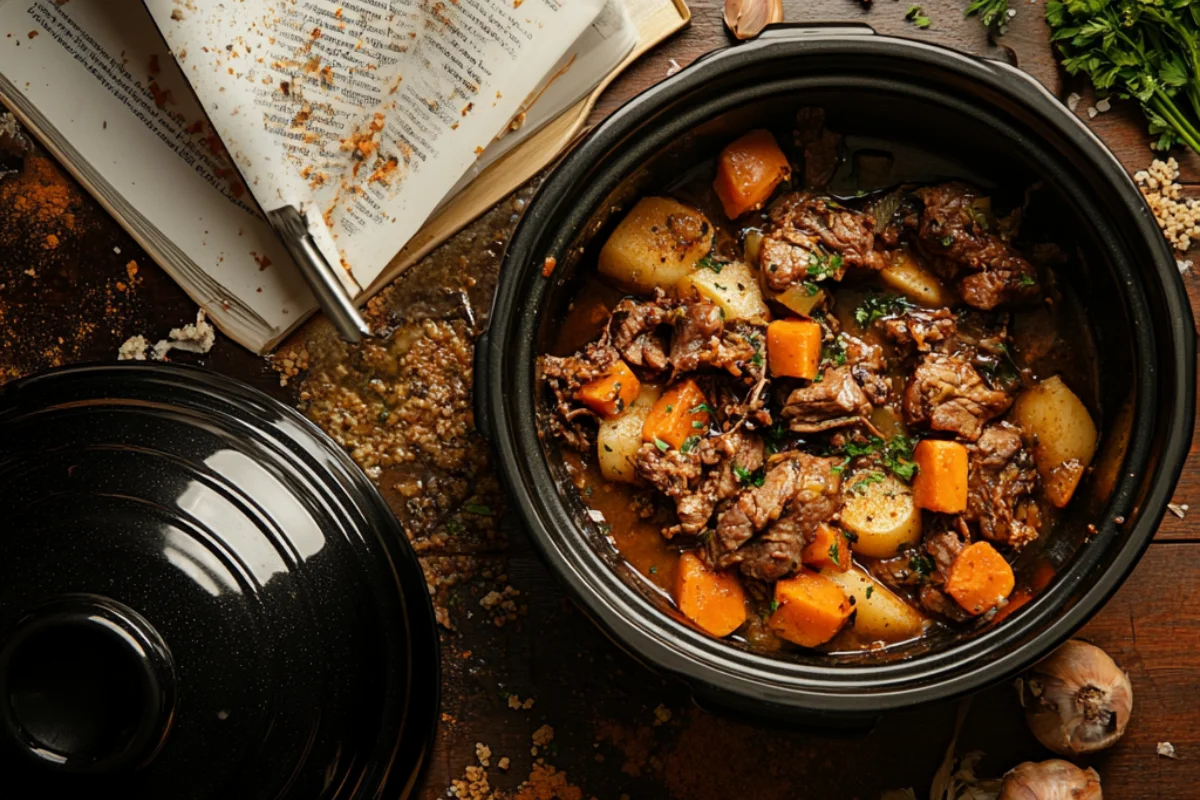
Slow cookers are often marketed as foolproof appliances, but anyone who has used one knows that mistakes can still happen. These errors can lead to uneven cooking, bland flavors, or even food safety concerns. In this section, we’ll explore the most common mistakes when using a slow cooker and how to avoid them.
Overloading the Slow Cooker
Why it’s a problem:
Filling your slow cooker too full—beyond the manufacturer’s recommended limit—can result in uneven cooking and poor heat circulation. When ingredients are tightly packed:
- Heat struggles to reach the center, leaving some food undercooked.
- Liquids may overflow, creating a mess and potentially diluting flavors.
Solution:
- Only fill your slow cooker two-thirds to three-quarters full. This ensures proper heat distribution and prevents spills.
- For recipes with a lot of liquid, use a larger slow cooker to accommodate the volume.
Using the Wrong Settings for Certain Foods
Not all slow cooker recipes can be treated the same, and improper temperature settings can make or break a dish.
Common issues:
- Cooking delicate ingredients like seafood or fresh vegetables on high heat can ruin their texture.
- Tough cuts of meat may remain chewy if cooked on low heat for too short a time.
How to avoid this mistake:
- Follow the recipe closely, paying attention to recommended heat settings.
- Understand that low heat works best for tough, fatty cuts of meat, while high heat is more suited to quicker recipes.
Combining Foods That Cook at Different Speeds
Throwing all your ingredients into the slow cooker at once might seem efficient, but it can lead to uneven results.
Examples of incompatible pairings:
- Root vegetables (e.g., potatoes, carrots) require longer cooking times than soft vegetables (e.g., zucchini or spinach).
- Meats and grains often cook at different rates.
Solution:
- Layer ingredients strategically, placing longer-cooking items at the bottom and more delicate ingredients on top.
- Add quick-cooking ingredients later in the cooking process.
Lack of Liquid or Incorrect Ratios
Slow cookers rely on moisture to create a steamy environment for even cooking. Insufficient liquid or incorrect ratios can lead to:
- Dry dishes: Foods like rice or pasta may absorb all the available liquid, leaving them undercooked or clumpy.
- Burnt spots: Without enough liquid, the food may scorch along the sides of the slow cooker.
Tips for success:
- Follow the recipe’s recommended liquid amounts. If you’re improvising, ensure there’s enough broth, sauce, or water to maintain moisture throughout the cooking process.
- Avoid overloading the slow cooker with thick, heavy sauces that don’t allow steam to circulate properly.
Not Searing Meats Beforehand
While slow cookers excel at tenderizing meat, they cannot replicate the caramelization and depth of flavor achieved through searing.
Why searing matters:
- Browning meat on the stovetop creates a rich, savory crust that enhances the overall flavor of the dish.
- Skipping this step can result in a less flavorful, one-dimensional meal.
How to incorporate searing:
- Before adding meat to the slow cooker, quickly brown it in a hot pan with a small amount of oil.
- Deglaze the pan with broth or wine and pour the flavorful liquid into the slow cooker.
Improper Timing for Adding Certain Ingredients
The slow cooker’s long cooking times can wreak havoc on delicate ingredients like dairy, herbs, or seafood if added too early.
What happens when you add these too soon?
- Dairy: Curdles or separates when exposed to prolonged heat.
- Herbs: Lose their bright flavor and may discolor.
- Seafood: Overcooks and becomes rubbery.
Fix this mistake:
- Add dairy and herbs in the last 30 minutes of cooking.
- Stir in seafood during the final 10–15 minutes, just long enough to cook through.
Misuse of Slow Cooker for Meal Preparation
Not all dishes are suitable for slow cooking. Attempting to use a slow cooker for recipes requiring specific textures or cooking techniques often leads to disappointing results.
Common examples:
- Fried or crispy foods lose their crunch in the moist environment.
- Dishes requiring precise temperature control (e.g., custards or soufflés) may fail.
Better alternatives:
- Use the oven, stovetop, or air fryer for recipes that rely on crisp textures or precise cooking conditions.
- Reserve the slow cooker for dishes that thrive on low-and-slow techniques, such as soups, stews, and braised meats.
Misconceptions About Cooking Times
The phrase “set it and forget it” implies that slow cookers can handle any recipe without close attention. However, this approach often leads to overcooked or undercooked meals.
Common myths debunked:
- Cooking for longer doesn’t always make food more tender. Delicate ingredients like chicken breasts or fish can become dry or mushy.
- Cooking on high doesn’t always save time. Certain dishes need low, consistent heat to develop their flavors.
Key takeaway: Follow recipe instructions carefully, and use a timer to avoid overcooking.
Alternatives to Slow Cooking for Unsuitable Dishes
If you’ve encountered challenges with certain ingredients or recipes in your slow cooker, consider switching to a more suitable cooking method:
- For crisp textures: Use an air fryer, broiler, or skillet for fried or crunchy foods.
- For delicate ingredients: Steam, sauté, or poach to preserve their flavor and texture.
- For baked goods: Use an oven to achieve proper browning and dry heat.
Pro tip: Experiment with combining cooking methods. For example, slow-cook a pot roast, then finish it in the oven for a caramelized crust.
Tips for Better Results in a Slow Cooker
Here are some general tips to help you avoid common mistakes and get the most out of your slow cooker:
- Prep ingredients properly: Chop vegetables evenly and trim excess fat from meats for consistent cooking.
- Use the right size slow cooker: A too-small or too-large cooker can impact cooking times and outcomes.
- Don’t lift the lid unnecessarily: Each time you remove the lid, heat escapes, which can add 20–30 minutes to cooking time.
- Adjust seasoning: Slow cooking can dull flavors, so taste and adjust seasoning toward the end of cooking.
- Experiment and learn: With practice, you’ll develop a sense of which recipes work best in your slow cooker.
FAQs: What Cannot Be Cooked in a Slow Cooker
Here are 10 frequently asked questions about foods and cooking methods unsuitable for slow cookers:
1. Why can’t I cook pasta or rice in a slow cooker without precooking them?
Pasta and rice absorb liquid during cooking, and in a slow cooker, they often become mushy or unevenly cooked. Precooking ensures they maintain the right texture and don’t over-absorb liquid from the dish.
2. Is it safe to cook frozen meat directly in a slow cooker?
No, it’s not recommended. Slow cookers heat food gradually, so frozen meat may remain in the “danger zone” (40°F–140°F) for too long, increasing the risk of foodborne illnesses. Always thaw meat before adding it to the slow cooker.
3. Why does seafood turn rubbery in a slow cooker?
Seafood cooks quickly and is highly sensitive to prolonged heat. The extended cooking time in a slow cooker can overcook seafood, leaving it tough and rubbery. Add seafood in the final 10–15 minutes for the best results.
4. Can I cook dairy-heavy dishes like creamy soups in a slow cooker?
Yes, but with caution. Dairy products like milk, cream, or yogurt tend to curdle or separate during slow cooking. To avoid this, stir them in during the last 30 minutes of cooking.
5. Why does the skin on whole poultry turn rubbery in a slow cooker?
The moist, low-heat environment of a slow cooker prevents the skin from crisping. For crispy skin, finish the poultry in an oven or under a broiler after slow cooking.
